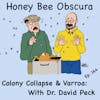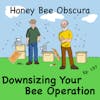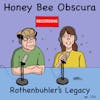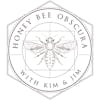The Evolution of Beekeeping (141)

What’s changed in the past 150 years or so? For some of us who have been around awhile, it seems like a lot. Most honey is still produced in the boxes Langstroth put together. Size and shape maybe different now, but it is all still, moveable frames...
 What’s changed in the past 150 years or so? For some of us who have been around awhile, it seems like a lot. Most honey is still produced in the boxes Langstroth put together. Size and shape maybe different now, but it is all still, moveable frames in a box. Hive tools, smokers, veils and the rest of our tools remain nearly unchanged. Now designs, new material to make them with, but basically the same.
What’s changed in the past 150 years or so? For some of us who have been around awhile, it seems like a lot. Most honey is still produced in the boxes Langstroth put together. Size and shape maybe different now, but it is all still, moveable frames in a box. Hive tools, smokers, veils and the rest of our tools remain nearly unchanged. Now designs, new material to make them with, but basically the same.
Who keeps bees now as to then? It used to be a man’s world, but the population of who is keeping bees is nearly even.
The electronic gizmos we use now would have been considered science fiction 100 years ago.
Listen in while Kim and Jim talk about the evolution of beekeeping, and who’s keeping bees. Where are you in the evolution?
______________________
Thanks to Betterbee for sponsoring today's episode. Betterbee’s mission is to support every beekeeper with excellent customer  service, continued education and quality equipment. From their colorful and informative catalog to their support of beekeeper educational activities, including this podcast series, Betterbee truly is Beekeepers Serving Beekeepers. See for yourself at www.betterbee.com
service, continued education and quality equipment. From their colorful and informative catalog to their support of beekeeper educational activities, including this podcast series, Betterbee truly is Beekeepers Serving Beekeepers. See for yourself at www.betterbee.com
______________________
Honey Bee Obscura is brought to you by Growing Planet Media, LLC, the home of Beekeeping Today Podcast.
Music: Heart & Soul by Gyom, All We Know by Midway Music, original guitar music by Jeffrey Ott
Copyright © 2023 by Growing Planet Media, LLC

Episode 141 – The Evolution of Beekeeping
Jim Tew: I'm in an oddly reflective mood today, I don't know why, but keep your chin up, it'll pass. I was thinking just a bit ago of how much gray hair there used to be in beekeeping. Now, don't get me wrong, there's still a lot of gray hair in beekeeping, but there's a lot of young people, a lot of new people that have come to beekeeping that have really given beekeeping a fresh innovative flavor from what it used to be. All those years ago to now, beekeeping still evolving.
Kim Flottum: Yes, it is. You got me to thinking about when I was editor, we did a reader survey once, and I can throw some stuff at you and see what you think about what I found in that reader survey over the course of the evolution of beekeeping.
Jim: I didn't know you'd be that prepared. I thought we'd just chat, but let's talk about it. Hi, I'm Jim Tew.
Kim: I'm Kim Flottum.
Jim: We're coming to you, Honey Bee Obscura podcast, where today I suspect that Kim and I are going to talk about then and now in beekeeping from our two perspectives.
Introduction: You are listening to Honey Bee Obscura, brought to you by Growing Planet Media, the folks behind Beekeeping Today podcast. Each week on Honey Bee Obscura, hosts Kim Flottum and Jim Tew explore the complexities, the beauty, the fun, and the challenges of managing honey bees in today's world. Get ready for an engaging discussion to delight and inform all beekeepers. If you're a long-timer or just starting out, sit back and enjoy the next several minutes as Kim and Jim explore all things honey bees.
Kim: Our two perspectives of feet-in-the-ground real-world keeping bees and working with beekeepers go back, what, about 35 years, you and I, about the same?
Jim: At the least. Yes.
Kim: That's all I can report on what's real, what I witnessed. There's no records about the way things were and that, but for 35 years, I've been part of the picture and so have you. 35 years ago, you could say, okay, that was then, and if it's changed, this is now, what do you think?
Jim: The thing I want to say right up front, and Kim and listeners, I hope I'll think to say it at the very end, is that beekeeping has been through a lot, in my experience. Our heads have been bloodied, but unbowed. Beekeeping today is dynamic, it's evolved, it's stayed current, and it's really come back nicely. I say come back, I should say evolved nicely. I'd be interested to hear what you found 30 years ago so we can throw stones at it, 35, 40 years later and see how some of these changes reflect. I'm not a futurist, but possibly see where things are going if we stay on this projection.
Kim: Okay. Let me think a minute. Let's see. You mentioned gray hair, and that's a reflection on how many older beekeepers there are out there as opposed to how many there are now. I think it was Langstroth was giving a talk one time about there's a lot of gray hair out there. The picture of beekeepers today is not so much gray hair. There's a lot of people in there that are too young to have gray hair.
What I see is the difference in the ages of people who keep bees now compared to back then. With them, they bring the tools of trades that they know, connections that they've made, places that they've been or can go. Just 30 years of being alive has changed the people that are keeping bees because there's so much more to do, so much more to have today than there was before.
Jim: That's all correct. When I first started in beekeeping, it was simple. I've tried to write articles for the magazines about how simple beekeeping could be if you want to keep it that way. Really, all you need is a couple of brood boxes, maybe a couple of supers, the related equipment, tops, bottoms, a smoker, a hive tool, and a veil. You probably want a pair of gloves for the bad days, and that's it. I made the comment, "What do you do with the other 143 pages of the catalog?" All those years ago, you can really see the evolution of the industry just by looking at the changes and bee supply catalogs.
Kim: Oh, good point. I hadn't thought about catalogs. Another thing you just mentioned is catalogs and the things that beekeepers needed back then, what five things you needed, the five basics. In the times since then until now, one of the things that has really changed, from my perspective, is back then you picked out the five things that people pretty much needed to keep bees with, and that's pretty much all they had and all they needed. Today, you mentioned catalogs. How many pages in a catalog? How much stuff can you put in a catalog to cover smoker, hive tool, all the things that you mentioned. There's a lot more stuff out there to use, and in theory, make you a better beekeeper.
Jim: In theory, yes. I have to say this, because even though my wife, to my knowledge, is not eavesdropping, it would be unfair not to mention her to this from her, but what things are actually needed and what things do I just want. Many things in that catalog I don't have to have, but I really want them. When Christmas or birthday rolls around, put checks by that. Let's not lose focus on where we are.
One of the huge thing that has changed is the evolution of the products and the supplies that are available to beekeepers that they can use, that they may need, that they may want, but they simply were not available 30, 40, 50 years ago. It was a skimpy supply then. I got to say this and get off of it, all those years ago, you could really buy some interesting stuff in those catalogs.
You could buy calcium cyanide for controlling wax mobs, and they had a disclaimer, "Be careful, this stuff can kill you." They would ship it to you. Now it would just be absolutely not possible to buy or use those products. Terramycin, how much terramycin, how much antibiotics did you and I buy? We were told, and I told beekeepers to use this prophylactically, put it on the colonies, and that way you'll prevent American foulbrood, and you can't do that anymore. It's not hard to see these transitions, these evolutions, and so far they've mostly been good, haven't they, Kim?
Kim: I got to say this carefully because there's a lot of stuff out there people like you and me, being as old as we are, don't need. We grew up with the three things you mentioned early on, and that's what you need. Gloves, hive tool, veil, that sort of thing. Anything else tended to be-- I'll say it, I've been to bee meetings where people were looking at some of this new stuff and you'd see those two older guys over there in the corner pointing at some piece of equipment in some vendor's booth and laughing, and you know that they were saying, "What the hell is that? Do we need it?"
Jim: A couple of things come to mind. Yes, I know what you're talking about. I don't think of any specific products, but this is probably a good time to hear from someone who would have these kind of products for sale, the things that we do need and sometimes want. Let's hear from them.
[music]
Betterbee: It's summertime and the Varroa population in your hives is booming. Target Varroa now with ApiLife Var to protect your hives from mite-borne diseases down the road. With over 30 years of international use, ApiLife Var is a natural, thymol-based treatment with an effectiveness that exceeds 94%. Learn more and get yours from Better Bee Today by visiting betterbee.com/alv
Jim: I need to tell you, Kim, that many times when you see something-- I've done this long enough, when you see a particular hive or bee product, you think, "I should get that right now because it won't be here next year." Sometimes when you were buying something because of the novelty of it, the uniqueness of it, part of my inner beekeeper said, "This is not going to make the cut. This is just not going to happen." I could list three or four of those things right now, but I'm reluctant to do it. I've gotten cautious about listing and describing and chuckling at what beekeepers have done in the past that were bad ideas because they put their heart in those ideas. They put their money where their mouth was, and they tried this. As a consumer, you look at it and you think, "This particular piece of equipment is not going to make it." This is all negative, Kim. I didn't mean to get off on it. You steered me down that way. I was going keep our revolution bright and happy, and oh no, you had to be truthful and tell it like it is there. We do have a lot more options available to us. While I'm on this, "What's changed in 30 years?" 30 years ago, we didn't buy equipment internationally. Everything we got was either grown or made here in the US. Now I just marvel to see the bee supplies of the world available either to us in the catalog or online.
Kim: Yes online.
Jim: The whole world is our beekeeping community now. Those have been major changes. Those have been major changes.
Kim: Another one, a change that's hard to pin down, it's hard to measure, let me put it that way, the role of beekeeping in climate change. The role that beekeeping has always had is pollinating crops and making honey. For a lot of backyard beekeepers, that's all they ever did. They pollinated the crops that were in their neighborhood or in their next-door apple orchards or whatever. Now when you look at commercial beekeeping, it's way, way, way different now than it was then. Bees on trucks. That's the life of most bees.
Jim: I don't know how to even approach that change. It used to be maybe a trailer behind a pickup and then the occasional semi-rig. The almond crops and the migratory pollination routes that we follow in the country now has made migratory commercial beekeeper more and more and more selective, evolved with the refrigerated computerized climate control rigs hauling the bees all over.
The bizarre number of requirements that are at the receiving site and then are at shipping site back, fire ants and other of these kinds of pests that gets moved all over, and the absolute fundamental need that that specialized aspect of beekeeping meets has just grown beyond my ability to comprehend it. I used to know and understand the basic tenants of commercial migratory beekeeping, but I wouldn't touch it now. With the amount of money that's involved, the amount of equipment, sophistication, that has changed dramatically in 35 to 40 years.
Kim: You got that right. That evolution also can be looked at in the very bees we are keeping. Certainly, 30 years ago, there were probably Italians and Carniolans and Caucasians, and that was about it. Am I right?
Jim: You are, but don't forget Dadant had a breedings facility for a while, Starlines, Midnights. I don't know if they were the first to start these specialized varieties, where they bred within races, if I could use that designation, and would select and breed for particular characteristics. Do you remember Dadant's Starlines and Midnights?
Kim: I do. I remember talking with Larry Connor when he was in charge of that program for them about how it was working.
Jim: That's where it started, but I know where you're going. Go ahead and follow this theme. We've started from whatever queen you got. We hope she's good, all the way up to have you tried this particular strain of bees now that's been sophisticatedly bred and selected for. We have some real pedigree queens now compared to 40 years ago.
Kim: One of the other things that's really changed is the opportunity for a beekeeper to get trained. Your county group may have a class, your state group may have a class, EAS and other groups have a master beekeeper program, and you as a beekeeper can start out not knowing which end of a hive tool to haul, and in two years know as much about, but not have as much experience, know as much about bees and beekeeping as the guy that's sitting across from you that's got 40 years' worth.
Jim: I've got an article coming up here in the immediate future, where I tried to discuss the fact that to somebody standing beside you in the grocery store sees you as a beekeeper. Beekeepers have an unspoken hierarchy of each other. Are you a first or second-year beekeeper, or are you a 40-year beekeeper? Because while to that grocery shopper we're both beekeepers, in the beekeeping world, we're remarkably different. A beekeeper is like saying automobile is how I described it in the article.
There's a lot of automobile variations out there, but we just call them automobiles. There's a lot of variation in beekeepers too, and that has been a change, if that's where you're going. The way those beekeepers are educated. I absolutely have to agree with you that you can go to the web. When I first started using the web, Kim, it was like going into a gymnasium. It was an echo in the web. I'm being funny now, but there was an echo in the web because nothing was there.
You type in beekeeping and you find two or three or 15 articles and three of them were mined on some obscure little server to get to it. Now I don't care what idea you have. Search it on some browser search engine and some beekeeper's already done it out there and put a YouTube video of it up or something. I don't know how to describe the electronic change in beekeeping.
I think that we could probably start an organization made up of virtual beekeepers on a streaming platform and have discussion groups and do the whole thing and never get out of our chairs and just sit there and run the whole thing from a streaming video perspective, and feel like if you've enjoyed keeping bees, the winds blowing, the bees are flying, it's as though you're video graphically there. There's nothing like that was 40 years ago where the web was such a powerful information and misinformation source.
Kim: That's for sure. You mentioned the video thing on YouTube. There's enough YouTube channels. If I live another 20 years, I still won't be able to catch them all, I think.
Jim: Right.
Kim: There's just so many of them out there.
Jim: We're talking in the past now, about seven or eight years ago, I just went to Google, a common search engine, I typed in Beekeeping. It came up with something like 18, I don't know, 10, 12 million hits. I thought, "Well, if I take 40 seconds to look at each one of these," I calculated that just on that 20-second search that I did, I would be reading information, I forget, Kim, for example, of the next 22 years. That's how much this thing belched on the Beekeeping information.
I realized that most of it was junk. Nonetheless, it would take me 30 seconds to determine that it was junk. Kim, but one big thing that needs to be mentioned that's been one of the biggest changes in beekeeping is the movement of women into all areas of beekeeping. That has been fundamental, I got to say, a very positive event that women are now, as much as they want to be in beekeeping, they can run the skid-to-air loader, or they can be the president of the group. They can have two hives in the backyard or they can have 50 hives and a queen-production operation. It's perfectly legitimate. That has been a positive major change in 40 years.
Kim: I'll go back to that survey we did 30-some years ago of the readers of Bee Culture. Back then, one of the questions on there was gender. I don't know if you can even ask that anymore on a survey, but the percentage of readers of B culture 30-plus years ago was pushing 65% male. That's two-thirds versus a third women. The latest that I've heard, the ratio of women to men beekeepers is improving. I can just sum it up like that.
Jim: I could make quite the list. What we've talked about, if I can do this from memory, we have a lot more and a lot more diversified equipment from a lot more different international and national sources. Commercial beekeeping has changed dramatically. The way that we receive, develop, and consume information has just changed night and day different. The age mix of beekeepers has modified itself and is now significantly different than what it was 30 years ago.
The number of women and meaningful beekeeping roles has dramatically changed. Kim, I don't know where beekeeping is going, but I think overall, beekeeping has done a good job recovering from the Africanized bee scare. We're still bloodied by this Varroa thing and by the other viral pests that we've got, but we keep developing tools, we keep hanging on. As a lot, beekeepers are a hard-headed bunch. I'm saying overall, comparing then to now that I really don't have a lot of interest in going back to then. I'm quite happy here now.
Kim: That's a good point. I guess I'm just going to sit here and relax for a minute and think. You and I are some of the lucky few people, and you can probably name them on one hand, who have been the recorders of these changes to beekeeping over the years. You did it because of your association with Ohio State University and Bee Culture Magazine. I did it with Bee Culture Magazine. Extension people all over have evolved with beekeeping, but I think you and I have got a pretty good picture of what was then and what's now.
Jim: I hope we have. Otherwise, you and I have wasted a lot of time, Kim. Years and years of wasted time if we don't have some overview of what happened. To the listeners and to you both, I'm sorry, I was just in a reflective mood. It seems like beekeeping is doing very well in most cases. It's always a struggle. It's never going to be all downhill and all easy, but overall, I like beekeeping the way it is right now.
Kim: One more point. The opportunity for education is certainly better now than it was, and the role of beekeeping organizations has made a big difference, I think. You have access to a lot of beekeepers, a lot of information. Just sitting in that room once a month for an hour or two is going to improve what you know and what you do. There's a lot more of that going on.
Jim: All those things are right. We're just two happy boys, aren't we? We'll do this again. Maybe we'll pick out some aspect of this and fine-tune, but I'll try to keep these reflective moments under control.
Kim: Catch you next time.
Jim: Till we talk again, bye-bye.
[00:23:24] [END OF AUDIO]
New to Honey Bee Obscura Podcast?
Here are some great episodes to start with. Or, check out episodes by topic.













